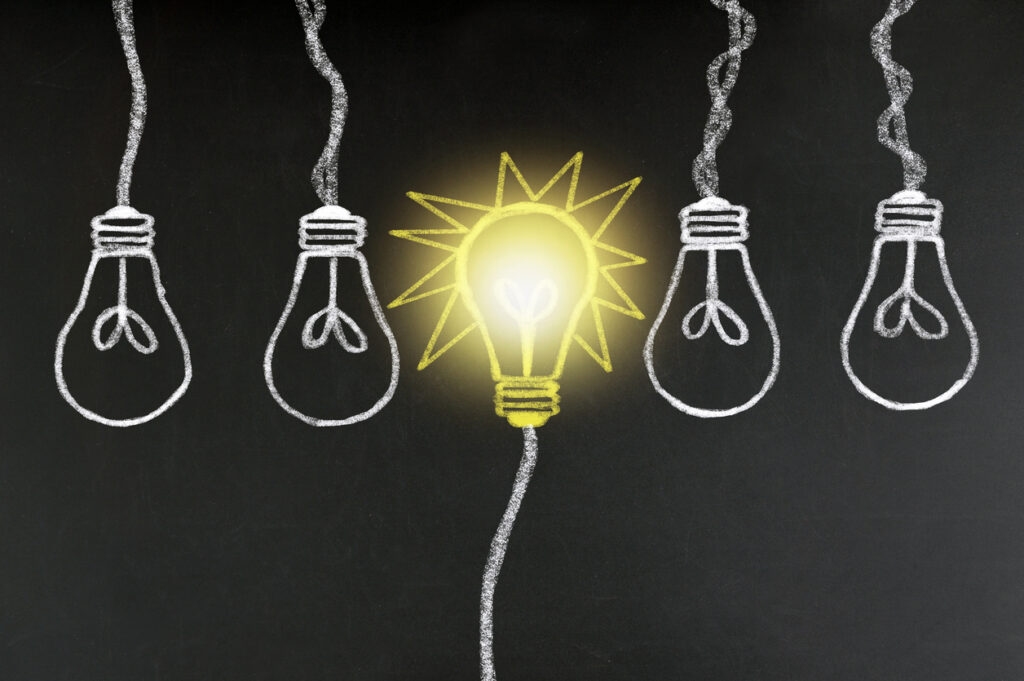Leading in an unpredictable working environment requires a growth mindset. Here are five key tips to help change your thinking and develop this.
Today’s volatile economic and political environment makes workplaces especially challenging. Executives who approach this with the right frame of mind will ensure their own and their organisation’s success.
Previous research suggests that there are two types of mindset that influence self-regulation and behavior: a growth mindset and a fixed mindset.
Having a ‘growth mindset’ refers to the implicit belief that talents and abilities are malleable. This facilitates a positive approach to learning and challenge. A ‘fixed mindset’ focuses on performance and the stability of competencies.
Unlike other characteristics and personal resources, an individual’s mindset is not a stable characteristic – it can change. A growth mindset can be cultivated, developed, and sustained through well-structured development, and lead to better outcomes at work.
How to identify a growth mindset
In practice, a growth mindset is an approach to learning defined by self-set learning goals.
Individuals with a growth mindset pursue challenging development opportunities. Even in the face of frustrations and setbacks, they perceive effort as essential for development, and seek feedback to garner useful insights.
As the world of work changes and workplaces become interdependent, interpersonal, and unpredictable, a growth mindset is likely to better prepare executives, compared with trained technical expertise, for the reality of the world of work today.
Having a growth mindset will help executives be cognitively and behaviorally ready, and responsive, to unknown challenges, so that they can lead effectively in an unpredictable world.
So what does a growth mindset look like at work and how can it be developed? We conducted research with former MBA students, who had completed a year-long intensive and experiential leadership development programme, to find out what sort of specific interventions, learning strategies and approaches helped them to develop a growth mindset, which they still applied in the workplace, and what this mindset looks like in practice.
Based on our interviews with them, we found the following five characteristics defined a growth mindset in the workplace.
- Active behavioral or interpersonal strategies
These include: active listening and truly valuing other people’s perspectives, communicating clearly to connect with colleagues and create a culture of openness, being curious about personal skill set, the willingness to develop competencies through the frequent giving and receiving of feedback, and acknowledging and accepting the ever-changing business environment and the need to flex with this, different cultures, and circumstances.
- High levels of effort
Having a learning mindset, being calm in chaos, and putting into practice learning from workplace experience.
- Active learning from mistakes and obstacles
Approaching problems as opportunities that can be resolved and overcome; actively pursuing personal or organisational challenges.
- Pro-active help-seeking behaviour
Valuing the importance of ‘soft’ skills. Actively making connections with other people both inside and outside the workplace and cultivating relationships and networking.
- Motivation
Aspire to progress their own career and the organisation. Proactively stretching themselves and taking opportunities. Acknowledging and admiring others.
Five ways to develop a growth mindset
For some people, these characteristics might need nurturing. Here are five key areas to focus on if you want to start doing this.
- Focus – be clear on what you want. Know your strengths and weaknesses. Choose and clarify specific areas of development and commit to achieving these. This might mean reprioritising importance according to your own and your organisation’s needs.
- Personalise – own your choices. Choose development areas that are important to you and for your organisation. Make them yours by developing a personalised plan for growth.
- Feedback – know your progress. Give feedback to yourself and actively seek feedback from others. Take time to reflect on your progress and keep a record of this. Reach out to others across your organisation and ask for their feedback, both formal and informal.
- Stretch – respond to feedback positively and constructively. Stretch yourself. Put learning into practice through experiences of increasing difficulty and complexity, and stretch yourself to achieve more. Get out of your comfort zone and into your discomfort zone!
- Relate – with others. Develop and nurture supportive relationships across the workplace for reflection and learning. Use these relationships as a sounding board and as coaching opportunities with peers or across teams.
In conclusion, nobody can predict with any certainty what future work and workplaces will look like, but everybody knows that they will be very different to today, and will require a different skill set from employees.
Having a growth mindset will help executives be cognitively and behaviorally ready, and responsive, to these unknown challenges, so that they can lead effectively in an unpredictable world.
Want to learn more about this topic? Read Six steps to achieve real behaviour change at work.
Leading in an unpredictable working environment requires a growth mindset. Here are five key tips to help change your thinking and develop this.
Today’s volatile economic and political environment makes workplaces especially challenging. Executives who approach this with the right frame of mind will ensure their own and their organisation’s success.
Previous research suggests that there are two types of mindset that influence self-regulation and behavior: a growth mindset and a fixed mindset.
Having a ‘growth mindset’ refers to the implicit belief that talents and abilities are malleable. This facilitates a positive approach to learning and challenge. A ‘fixed mindset’ focuses on performance and the stability of competencies.
Unlike other characteristics and personal resources, an individual’s mindset is not a stable characteristic - it can change. A growth mindset can be cultivated, developed, and sustained through well-structured development, and lead to better outcomes at work.
How to identify a growth mindset
In practice, a growth mindset is an approach to learning defined by self-set learning goals.
Individuals with a growth mindset pursue challenging development opportunities. Even in the face of frustrations and setbacks, they perceive effort as essential for development, and seek feedback to garner useful insights.
As the world of work changes and workplaces become interdependent, interpersonal, and unpredictable, a growth mindset is likely to better prepare executives, compared with trained technical expertise, for the reality of the world of work today.
Having a growth mindset will help executives be cognitively and behaviorally ready, and responsive, to unknown challenges, so that they can lead effectively in an unpredictable world.
So what does a growth mindset look like at work and how can it be developed? We conducted research with former MBA students, who had completed a year-long intensive and experiential leadership development programme, to find out what sort of specific interventions, learning strategies and approaches helped them to develop a growth mindset, which they still applied in the workplace, and what this mindset looks like in practice.
Based on our interviews with them, we found the following five characteristics defined a growth mindset in the workplace.
- Active behavioral or interpersonal strategies
These include: active listening and truly valuing other people’s perspectives, communicating clearly to connect with colleagues and create a culture of openness, being curious about personal skill set, the willingness to develop competencies through the frequent giving and receiving of feedback, and acknowledging and accepting the ever-changing business environment and the need to flex with this, different cultures, and circumstances.
- High levels of effort
Having a learning mindset, being calm in chaos, and putting into practice learning from workplace experience.
- Active learning from mistakes and obstacles
Approaching problems as opportunities that can be resolved and overcome; actively pursuing personal or organisational challenges.
- Pro-active help-seeking behaviour
Valuing the importance of ‘soft’ skills. Actively making connections with other people both inside and outside the workplace and cultivating relationships and networking.
- Motivation
Aspire to progress their own career and the organisation. Proactively stretching themselves and taking opportunities. Acknowledging and admiring others.
Five ways to develop a growth mindset
For some people, these characteristics might need nurturing. Here are five key areas to focus on if you want to start doing this.
- Focus – be clear on what you want. Know your strengths and weaknesses. Choose and clarify specific areas of development and commit to achieving these. This might mean reprioritising importance according to your own and your organisation’s needs.
- Personalise – own your choices. Choose development areas that are important to you and for your organisation. Make them yours by developing a personalised plan for growth.
- Feedback – know your progress. Give feedback to yourself and actively seek feedback from others. Take time to reflect on your progress and keep a record of this. Reach out to others across your organisation and ask for their feedback, both formal and informal.
- Stretch – respond to feedback positively and constructively. Stretch yourself. Put learning into practice through experiences of increasing difficulty and complexity, and stretch yourself to achieve more. Get out of your comfort zone and into your discomfort zone!
- Relate – with others. Develop and nurture supportive relationships across the workplace for reflection and learning. Use these relationships as a sounding board and as coaching opportunities with peers or across teams.
In conclusion, nobody can predict with any certainty what future work and workplaces will look like, but everybody knows that they will be very different to today, and will require a different skill set from employees.
Having a growth mindset will help executives be cognitively and behaviorally ready, and responsive, to these unknown challenges, so that they can lead effectively in an unpredictable world.
Want to learn more about this topic? Read Six steps to achieve real behaviour change at work.





